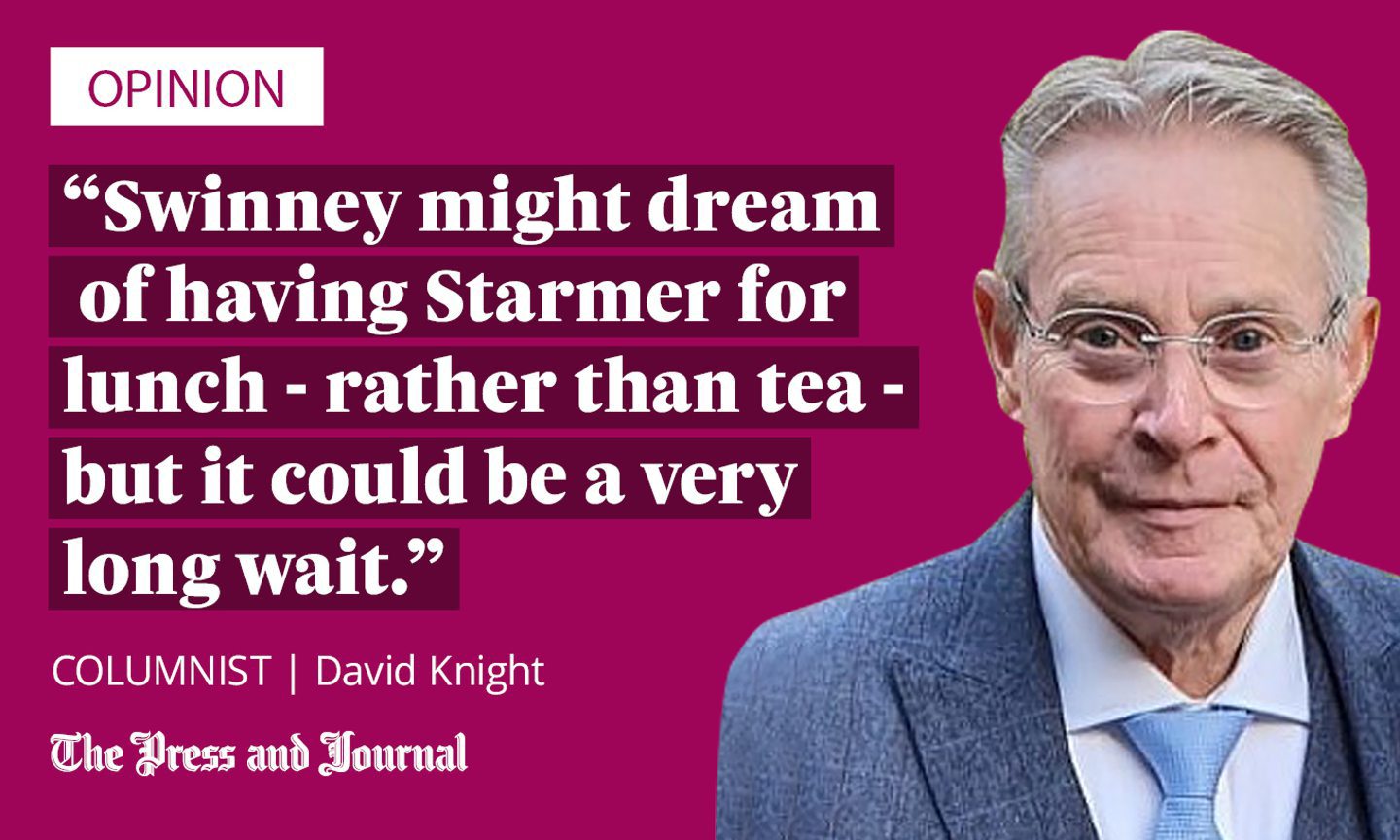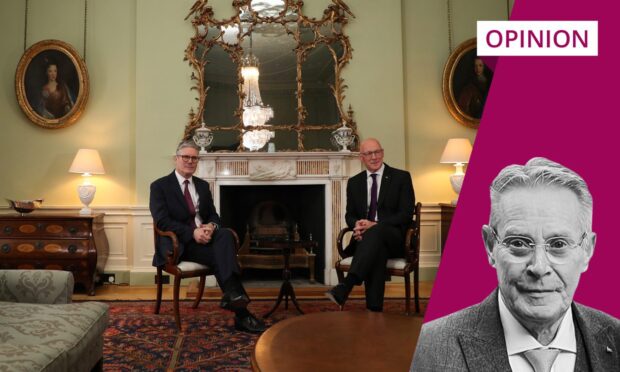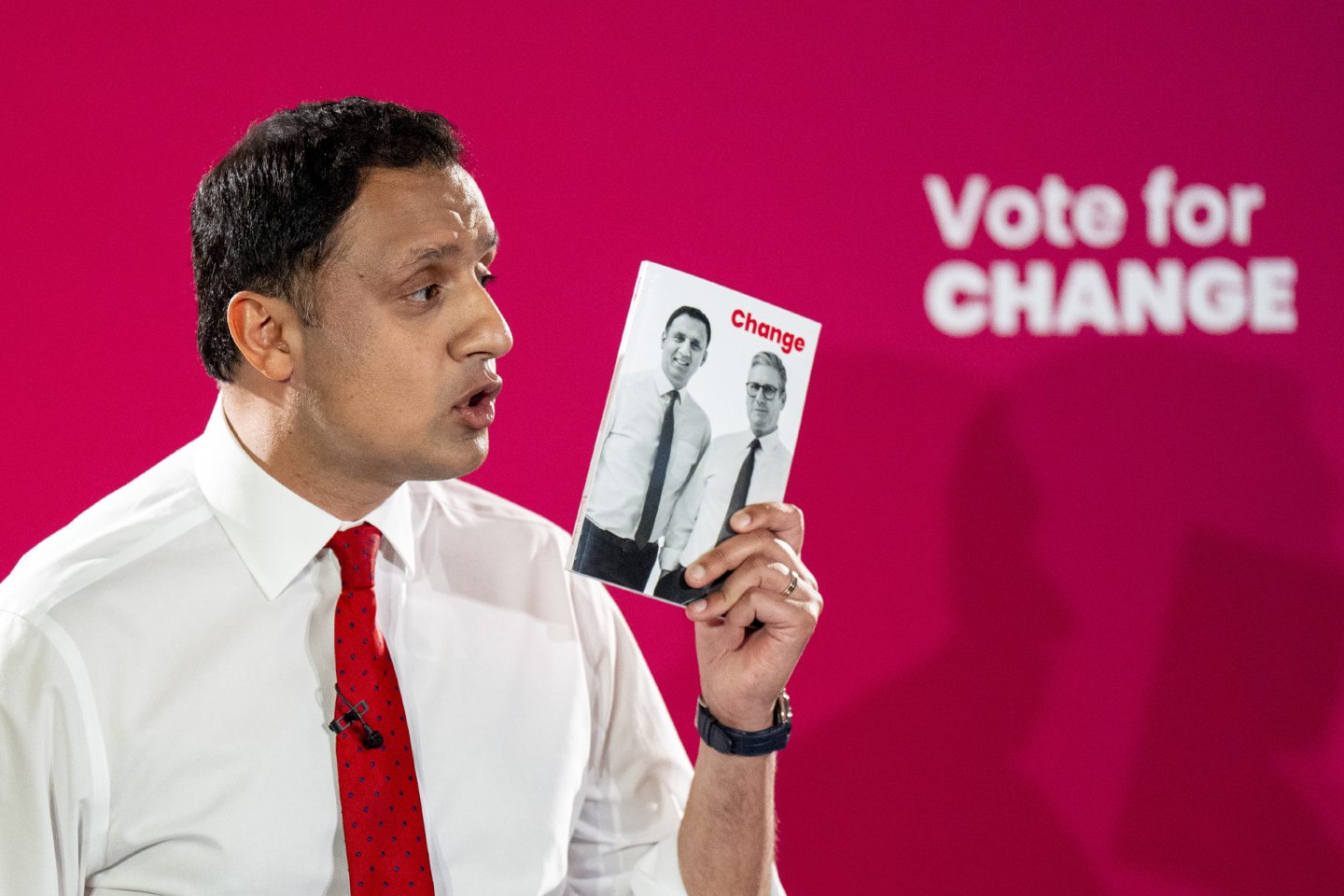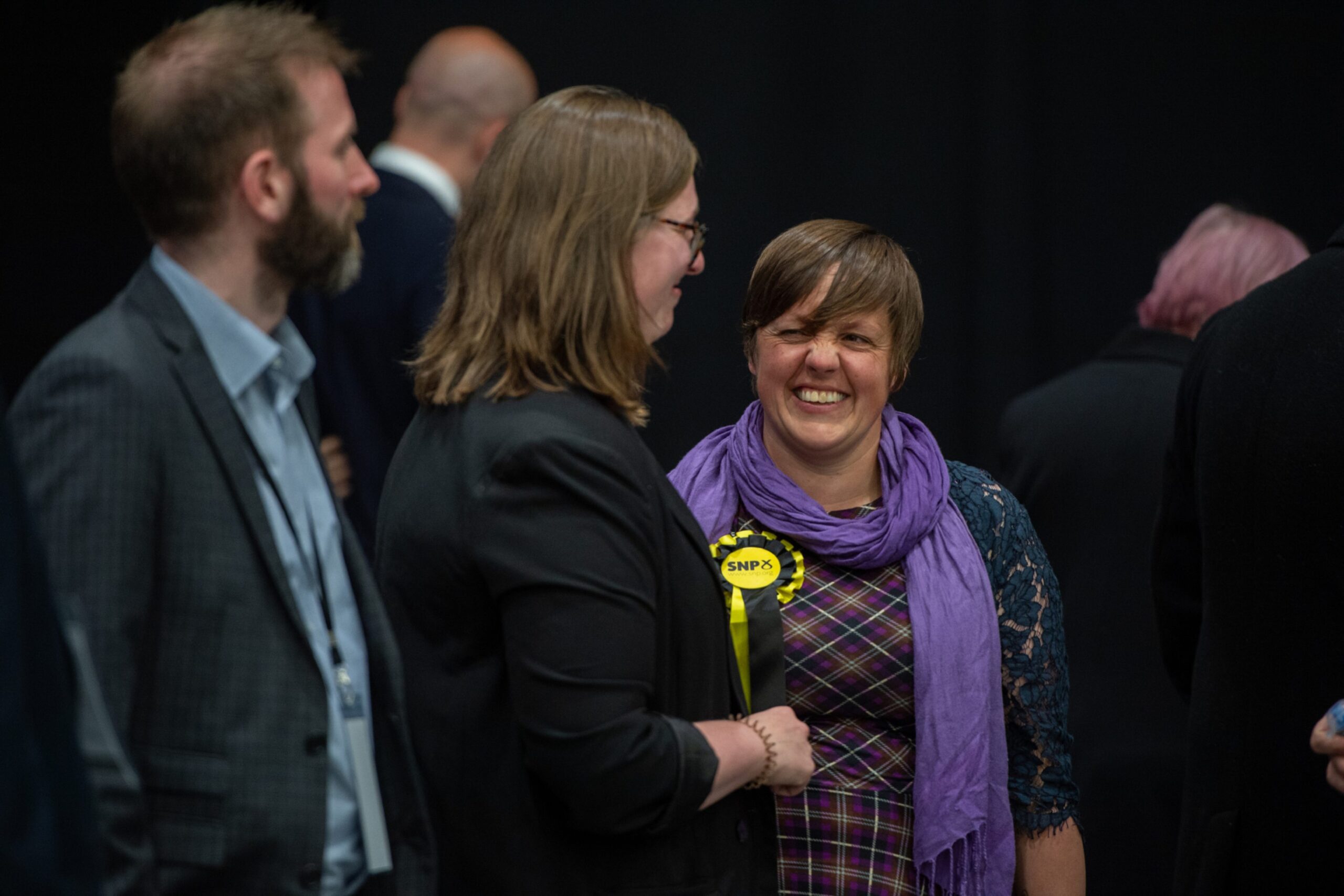When Sir Keir Starmer called round to Bute House to say hello, John Swinney must have felt like he’d invited the big bad wolf for tea.
The triumphant new prime minister, who was sitting opposite and smiling back at Swinney, was trying hard not to show he was licking his lips. After all, Swinney was clearly the next dish on the menu for Starmer, as he brought Labour to the boil north of the border.
Winning the general election emasculated Swinney’s political base, but was merely phase one of Labour’s project. Starmer has been quite clear about phase two: evicting Swinney and the SNP from their Holyrood power base at the next Scottish parliamentary elections in 2026.
By the time the summer break is over and the SNP has recovered slightly from its bad case of political concussion, it will have just over 17 months left to turn the tide around after what even impartial observers regard as 17 years of undistinguished domestic service laced with incompetence, scandal and divisive self-serving party ambitions.
A tall order while limping along as a wounded minority Scottish Government, with Labour making the most of its momentum to aim for invincibility in the devolved corners of the UK, too.
I suppose Swinney was smiling through gritted teeth during an uncomfortable tea-for-two at Bute House. No longer could his party portray a visiting PM as the oppressive enemy at the door – as it did so successfully with the Tories – when many people in Scotland welcomed Starmer as some kind of liberating hero.

Hence an apparent new “entente cordiale” between Westminster and Holyrood – a big relief for many, after the toxic, all-out political warfare of the past two decades. But it will undoubtedly sit heavy with Swinney.
He might look and sound like everyone’s favourite friendly headmaster, but the first minister has been at the very heart of the failed SNP strategy during this period, as former right-hand man to Alex Salmond and Nicola Sturgeon.
He was pugnacious again during the general election campaign, as he stuck to the ridiculous “de facto” referendum policy, which was clearly way out of step with public mood, and beyond realms of simple common sense.
Renewed attempts to put Westminster to the sword by such contorted means now look faintly preposterous in the current climate. Like the Black Knight in Monty Python, who fought King Arthur to protect a flimsy plank crossing a stream, which will have to serve, for these purposes, as a metaphor for recent independence strategy.
Unfortunately, King Arthur chopped off both the knight’s arms and legs. But he claimed a draw while his head and torso writhed on the ground, challenging Arthur to fight on – dismissing his wounds as “but a scratch”.
Given the extremes of Labour and Tory success and failure since 2019, it was not surprising to hear one SNP voice claiming the party could bounce back, too. But it has to reclaim its credibility, like Starmer has done with his reinvention of “public service first, party second” Labour.
This might take another decade to rebuild, with fresh ideas and leadership after many years of failing to deliver, but it’s not entirely impossible.
I mistakenly thought they were signalling this as Humza Yousaf replaced Sturgeon. But they just carried on in Sturgeon-attack mode.
Admittedly, she also spoke humbly on one occasion about unifying Scotland and listening to the public (after the referendum defeat), but forgot about it after five minutes.
Can Holyrood put things right in the Highlands and Grampian?
The voices of the north and north-east certainly made themselves heard during the general election. Prevarication over new oil and gas licences, insulting delays on A9 and A96 upgrades and controversial fishing policy – to name but a few local issues – intensified public dissatisfaction locally with the ruling party in Scotland.
There appears to be little room for manoeuvre for a damaged Holyrood government to put things right in the Highlands and Grampian; time was frittered away on grandiose ideological policies which pushed local people down the pecking order.
Starmer is in the driving seat, and will waste no time in enhancing a new feel-good factor in key Scottish areas such as these with whatever incentives are within his powers to undermine the SNP further before 2026.
It might easily have been worse for the SNP; the party could have been down to seven MPs. Stephen Flynn and Kirsty Blackman clung on in Aberdeen South and North, but this disguised the reality of a dire situation.
Labour and Tory supporters split the vote against Flynn, which was collectively 50% more than his share; Labour closed the gap between itself and Blackman by a stunning 90%. Tactical voting in these two seats could become a factor when 2026 comes around.
Swinney might dream of having Starmer for lunch – rather than tea – but it could be a very long wait.
David Knight is the long-serving former deputy editor of The Press and Journal



Conversation